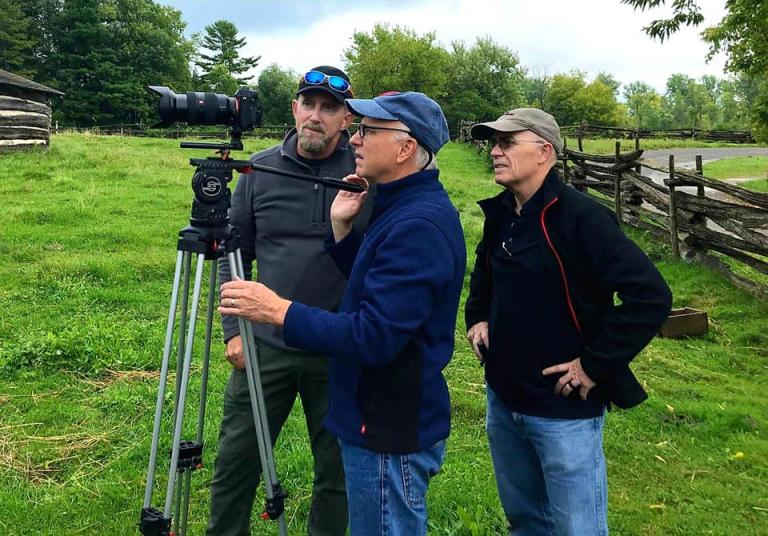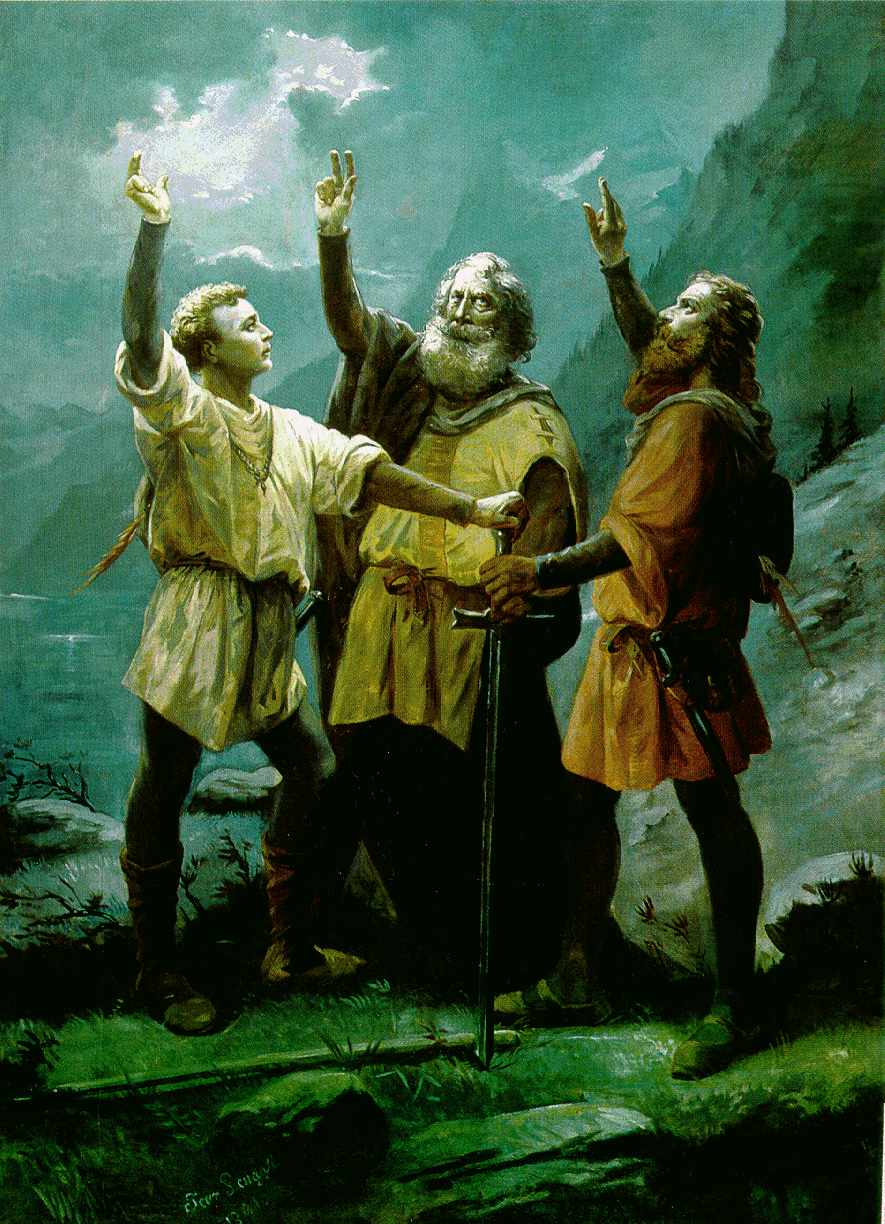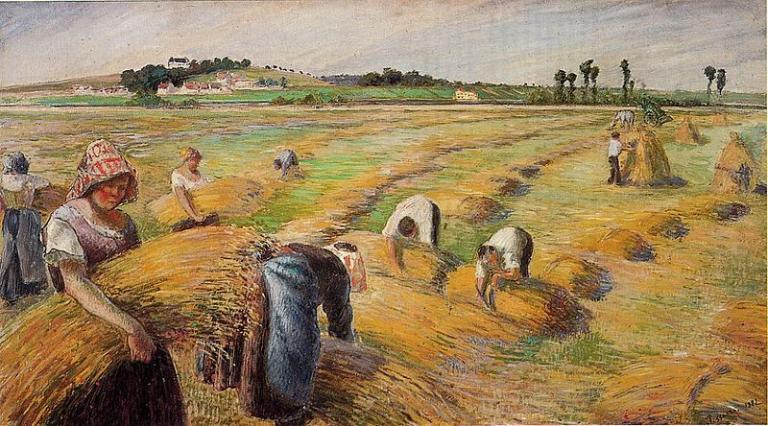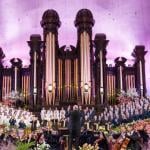
We spent another solid day today filming for the Interpreter Foundation’s forthcoming Becoming Brigham series of short documentaries, this time doing indoor “studio” conversations at a home in Pleasant Grove. I think that we captured some good discussions, and I’m looking forward to eventually making these materials public. I hope and I believe that people will find them interesting and helpful.

I’m afraid that I’ve fallen a bit behind on alerting you to new posts on the website of the Interpreter Foundation. Which is, I admit, a bit odd, since the Interpreter Foundation is supposed to have died many years ago. Puzzling, no? Here are some recently posted items that are worthy of examinationt:
- “The Heartland Versus Mesoamerica: Part 3: Up, Down, and Distance,” written by Brant A. Gardner
- “The Heartland Versus Mesoamerica: Part 4: Directions and the East and West Seas,” written by Brant A. Gardner
- Nibley Lectures: Come, Follow Me Doctrine and Covenants Lesson 20: “Seek Ye Earnestly the Best Gifts” Doctrine and Covenants 46–48 “During 1978, 1979, and 1980, Hugh Nibley taught a Doctrine and Covenants Sunday School class. Cassette recordings were made of these classes and some have survived and were digitized by Steve Whitlock and recently enhanced by Nick Galieti. Most of the tapes were in pretty bad condition. The original recordings usually don’t stop or start at the beginning of the class and there is some background noise. Volumes vary, probably depending upon where the recorder was placed in the room. Many are very low volume but in most cases it’s possible to understand the words. In a couple of cases the ends of one class were put on some space left over from a different class. There’s some mixup around D&C 90-100 that couldn’t be figured out so those recordings are as they were on the tapes. Even with these flaws and missing classes, we believe that these will be interesting to listen to and valuable to your Come, Follow Me study program.”
- Interpreter Radio: Come, Follow Me in Context May 12-18: “Seek Ye Earnestly the Best Gifts” — Doctrine and Covenants 46-48 “For the 20 April 2025 Come, Follow Me segment of the Interpreter Radio Show, Bruce Webster and Kris Frederickson discussed the Come, Follow Me Doctrine & Covenants lesson for 12-18 May covering D&C 46 through 48. Their discussion was recorded and, shorn of commercial interruptions, has now been made available for you, at your convenience. The other segments of the 20 April 2025 radio show are accessible at https://interpreterfoundation.org/interpreter-radio-show-april-20-2025. The Interpreter Radio Show can be heard live on Sunday evenings from 7 to 9 PM (MDT), on K-TALK, AM 1640, or you can listen to it on the Internet at ktalkmedia.com.
- Come, Follow Me — D&C Study and Teaching Helps (2025): Doctrine and Covenants 46–48: May 12 – 18: “Seek Ye Earnestly the Best Gifts”

BBC: “Watch: The first day of the conclave in a minute” Black smoke came out of the Sistine Chapel today, so non habemus papam. Some of you are no doubt wondering, so, for the record: If nominated, I will not run; if elected, I will not serve. Just so you know.

On the Emirates flight from Dubai to Houston last Friday, I watched four movies and listened to a range of classical music and, over Iran, listened to the Beatles’ first British album, which struck me as rather amusing. Here are the four movies that I watched:
- Godzilla Minus One (2023; in Japanese, with subtitles) — The original Godzilla was very important to me as a young child. I watched it nine times during a single summer week, on Channel 9. So, seeing this among the movie offerings, I couldn’t resist.
- Gladiator II (2024) — I rather liked this one, despite the considerable liberties that it takes with Roman history.
- September 5 (2024) — This was a good refresher for me about the Munich massacre of 1972 . It’s told entirely from the perspective of the ABC Sports crew that was there in Munich for the 1972 Summer Olympics.
- William Tell (2024) — This film, I now see, has received extremely mixed reviews. Some people love it, while some loathe it. At least in the place that I looked, there seems no in-between. I quite enjoyed it, actually, and certainly not least because it involves my beloved Switzerland and is set in places (like Sarnen, Küsnacht , and especially Altdorf) with which I’m familiar. It was fun to see the coat of arms of Canton Uri prominently displayed, and to see a depiction of the famous Rütlischwur or “Rütli Oath,” which is fundamental to the establishment of Switzerland (officially, the ): “Wir wollen sein ein einzig Volk von Brüdern, in keiner Not uns trennen und Gefahr. Wir wollen frei sein, wie die Väter waren, eher den Tod, als in der Knechtschaft leben. Wir wollen trauen auf den höchsten Gott und uns nicht fürchten vor der Macht der Menschen.” “We shall be a single people of brothers, never to part in danger or distress. We shall be free, just as our fathers were, and rather die than live in slavery. We shall trust in God Most High and never be afraid of human power.” The film is loosely based upon Friedrich Schiller’s classic play Wilhelm Tell. It’s shockingly brutal in at least one scene and invents a rather politically correct version of Tell (who may be wholly legendary anyhow) and of the women in the story. And, although the landscape shown in the movie is pretty, the cinematography doesn’t begin to do justice to the spectacular beauty of the real Switzerland. Still, I liked it.

But now, alas, it’s time for a septet of abominations from the Christopher Hitchens Memorial “How Religion Poisons Everything” File™. Some of the harvested fruit of theism, if you will. Brace yourselves:
- “Youth in Northampton, England, collect stamps for charity and meet king’s representative: Lord lieutenant visits Northampton England Stake youth, who are often serving their community”
- “Church donations in Ghana part of global initiative for women and children: Efforts from The Church of Jesus Christ of Latter-day Saints help promote education and health for communities in Ghana, West Africa”
- “‘We have these hands’: Thousands of women help with several projects during BYU Women’s Conference: Thousands of women who attended the 2025 BYU Women’s Conference put their hands and hearts to work, serving others in need and lifting burdens through meaningful projects”
- “How Latter-day Saints Changed Lives in Honor of Global Youth Service Day: Youth unite across Argentina, Canada, the US, and beyond”
- “The Church Donates Medical Equipment to Equiza Hospital in Argentina: This donation is part of 100 service projects in celebration of the Church’s 100-year anniversary in South America”
- “The Church of Jesus Christ Provides Earthquake Relief in Myanmar: Thousands of survivors remain displaced”
- “Soccer Connects Refugee Girls to New Communities Through She Belongs: Latter-day Saint participants share how they are following the teachings of Jesus Christ”
And then there are these two, from the subsection of the Hitchens File that is known among the cognoscenti as “Utah is Hell on Earth, Thanks to the Mormons”:
- “Why is the world coming to Utah? Antony Blinken, Mike Pompeo, world leaders are in Utah this week for global summit on Trump’s tariffs”
- “Opinion: The ‘Utah way’ rises again”













